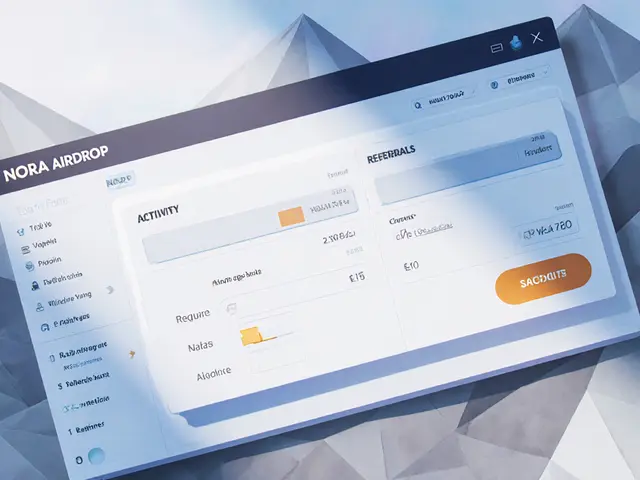When you trade crypto with leverage, you’re betting more than you own. That’s risky. And when the market turns against you, the liquidation engine steps in - no warning, no mercy. It doesn’t care if you’re having a bad day. It doesn’t care if you thought the price would bounce. It just does its job: close your position before the whole system collapses.
What Exactly Is a Liquidation Engine?
A liquidation engine is an automated system that shuts down leveraged trading positions when they become too risky. Think of it like a circuit breaker for crypto loans. If you borrow $10,000 worth of ETH using $5,000 as collateral, the engine watches your collateral value like a hawk. If ETH drops 50%, your collateral is gone. The engine steps in and sells your position to pay back the loan.
This isn’t optional. Without it, platforms would lose money every time a trader defaults. Imagine a DeFi lending protocol where 100 people borrow against their crypto. If one person’s position crashes and no one pays back, the whole system becomes insolvent. Liquidation engines prevent that. They’re the reason you can still borrow on Aave, dYdX, or BitMEX today.
How Liquidation Triggers Work
Every platform has its own rules. But they all follow the same logic: collateral ratio.
Let’s say you open a 10x leveraged long on BTC. You put up $1,000. That lets you control $10,000 worth of Bitcoin. The platform sets a maintenance margin at 5%. That means if your collateral drops below 5% of your position value, you’re in danger.
So if BTC drops 10%, your $10,000 position is now worth $9,000. Your $1,000 collateral is now only 11% of the position - still safe. But if BTC drops another 5% (total 15% down), your collateral is now $500. That’s 5.5% of $9,000. Still okay.
Now BTC drops another 3%. Your position is $8,730. Your collateral is $300. That’s 3.4% - below the 5% threshold. Liquidation engine triggers.
Some platforms use a liquidation price instead. That’s the exact price where your position gets closed. You can calculate it: Liquidation Price = Entry Price × (1 - (Initial Margin / (Leverage × Close Factor))). Most exchanges show this number in your dashboard. But don’t trust it blindly. Prices move fast. Slippage can kill you.
Centralized vs. DeFi Liquidation Engines
There are two main types: centralized exchange engines and DeFi smart contract engines. They work differently - and the difference matters.
Centralized exchanges like BitMEX, Binance, and Bibox run liquidations on their own servers. They use real-time market data and execute trades instantly. If your position is underwater, they sell it at the current market price. If there’s not enough buyers, they trigger Auto-Deleveraging (ADL). That means they take profits from other traders who are winning - and use that money to cover your loss. It’s brutal, but it keeps the platform solvent.
ADL isn’t random. BitMEX ranks traders by profit and leverage. The most profitable, highest-leveraged traders get picked first. You could be winning big and suddenly lose 20% of your profit because someone else got liquidated. No warning. No choice.
DeFi protocols like Fathom, Dolomite, and Demex run liquidations on-chain. They use smart contracts. No company controls them. No CEO can pause them. The rules are written in code and can’t be changed.
On Demex, you don’t get liquidated automatically. Someone else - a liquidator - has to call the liquidation function. They pay the gas fee and get a reward (usually 5-10% of the position value). If no one acts, your position stays open… even if it’s negative equity. That’s a problem during flash crashes. Liquidators might not want to spend $50 in gas to save a $200 position.
Fathom and Dolomite fix this with automated liquidators. The protocol itself runs bots that watch for under-collateralized positions and trigger liquidations. Dolomite even uses a virtual liquidity model - meaning one asset can back multiple loans at once. That reduces slippage and keeps markets stable during panic.

Why Liquidation Prices Don’t Tell the Whole Story
Many traders think they’re safe if their position is above the liquidation price. They’re wrong.
On centralized exchanges, your position can be liquidated even if the price hasn’t hit your liquidation level. Why? Because of order book depth. If BTC drops from $60,000 to $58,000 in 0.5 seconds, the exchange can’t find buyers fast enough. So it uses the last traded price - which might be $58,100 - and closes you at $57,800. That’s slippage. And it’s normal.
On DeFi, oracle delays can cause the same problem. If Chainlink’s price feed updates every 5 seconds, and BTC crashes 15% in 3 seconds, your liquidation triggers based on an old price. You get liquidated at $60,000 when the real price is $51,000. You lose more than you should.
Experienced traders always add a buffer. If your liquidation price is $55,000, they keep their position above $57,500. That 5% cushion gives you room to breathe during volatility.
Auto-Deleveraging: The Hidden Risk
ADL is the most feared feature in centralized crypto trading. It’s not a bug - it’s a feature. But it’s not fair.
When a trader gets liquidated and there’s no liquidity to cover the loss, the exchange doesn’t just eat the loss. They take it from the most profitable traders. The system looks at open positions. It finds the ones with the highest unrealized profit and highest leverage. Then it reduces their profits to cover the gap.
Imagine you’re long BTC with 5x leverage. You’ve made $8,000 profit. A whale gets liquidated. The exchange needs $12,000 to cover it. Your $8,000 profit gets wiped. You’re back to break-even. You didn’t do anything wrong. But you lost money anyway.
DeFi doesn’t have ADL. That’s a plus. But it has its own risk: liquidation delays. If no one calls the liquidation, the position stays open. The debt grows. The collateral keeps falling. Eventually, the protocol has to take it over - but by then, the damage is done.

How to Survive Liquidations
You can’t avoid them. But you can survive them.
- Know your liquidation price - not just the number, but how it’s calculated. Check the platform’s docs. Fathom’s documentation gives exact formulas. BitMEX doesn’t.
- Use a 20-30% buffer - never trade right at the edge. If your liquidation is at $50,000, close half your position at $58,000.
- Watch the order book - if there’s no bid depth below you, you’re a sitting duck. A 2% drop could trigger a cascade.
- Avoid high leverage - 10x is dangerous. 5x is manageable. 3x is safe. Most retail traders get liquidated because they over-leveraged.
- Use stop-losses - even if the exchange doesn’t, set your own on your wallet or trading bot. Don’t rely on the engine.
What’s Next for Liquidation Engines?
The next wave is hybrid systems. Imagine a DeFi protocol that uses off-chain execution for speed but records everything on-chain for transparency. That’s what Dolomite is building. Layer-2 solutions like zkSync and StarkNet could let liquidations happen in milliseconds while still being verifiable on Ethereum.
Regulators are watching too. The EU’s MiCA law will require exchanges to disclose liquidation mechanics. If you’re in the EU, you’ll soon see a full breakdown of how your position gets closed - down to the algorithm.
For now, the best traders don’t fight the engine. They understand it. They build around it. They know that in crypto, the market doesn’t care if you’re right. It only cares if you’re collateralized.
Frequently Asked Questions
What happens if my position gets liquidated?
Your position is automatically closed and sold at market price. Any remaining collateral after paying back the loan and fees is returned to you. If there’s a shortfall - like in ADL - you lose your entire margin. In DeFi, if the liquidation fails due to low liquidity, your position may stay open until someone triggers it manually.
Can I avoid liquidation by adding more collateral?
Yes. Most platforms let you deposit more collateral to raise your margin ratio. This is called "topping up." It’s the safest way to avoid liquidation. But you need to act before the engine triggers. Once liquidation starts, you can’t stop it.
Why do some platforms have higher liquidation thresholds than others?
It depends on the platform’s risk model. More conservative platforms like Aave use 80% loan-to-value ratios, meaning you need 20% extra collateral. Aggressive platforms like BitMEX allow 100x leverage with 1% maintenance margin. Higher leverage = lower safety buffer = higher chance of liquidation.
Is Auto-Deleveraging legal?
It’s not illegal, but it’s controversial. Regulators in the EU, UK, and Singapore are pushing for clearer rules. Some exchanges now disclose ADL priority lists. But most still don’t explain how or why traders get selected. It’s a gray area - technically allowed, but ethically questionable.
Do DeFi protocols charge fees for liquidations?
Yes. Liquidators pay gas fees to trigger the process, but the cost is usually passed to the liquidated user. On Fathom, the close factor (typically 5-10%) is taken from the position’s collateral. That’s the fee. On Demex, the liquidator keeps a reward (5-10%), which reduces the loss for the protocol - but still means you lose more than you’d expect.





Benjamin Jackson
Man, this post really hit home. I lost everything on a 15x BTC long last year because I trusted the liquidation price like it was gospel. Turns out, the market doesn’t care if you’re right - it just cares if you’re collateralized. Lesson learned the hard way.
Louise Watson
Buffer. Always buffer.
Liam Workman
There’s something almost poetic about how cold and mechanical these engines are. No anger, no pity - just math. It’s like nature, but coded. And yet, we keep coming back, betting our sleep, our rent money, our sanity on it. Maybe we’re not traders… maybe we’re just gladiators in a digital arena, hoping the crowd doesn’t turn on us.
I used to think leverage was power. Now I know it’s just borrowed time.
Rob Ashton
For anyone new to this: never underestimate the power of slippage. I’ve seen positions get liquidated 8% below the stated liquidation price during a flash crash. It’s not a glitch - it’s the system working as designed. Always assume the worst-case scenario, and trade accordingly. Your future self will thank you.
Also - stop chasing 50x gains. That’s not trading. That’s gambling with a spreadsheet.
Kathy Ruff
DeFi’s manual liquidation model is a double-edged sword. On one hand, it’s decentralized. On the other, during a 20% crash in 30 seconds, your position is basically a sitting duck. I’ve seen $300 positions stay open for hours while the debt ballooned to $800. The protocol doesn’t care - it’s just code. That’s terrifying.
Automated liquidators are the future. They’re not perfect, but they’re better than waiting for some random guy with $50 in gas to notice your position.
John Doe
ADL is a scam. Pure and simple. They let you think you’re trading on a fair platform, but behind the scenes, they’re robbing your profits to cover the losses of reckless whales. It’s not just unethical - it’s predatory. And the worst part? They don’t even tell you how they pick who gets robbed. It’s all hidden in fine print. This isn’t finance. It’s a rigged casino with a blockchain logo.
And don’t even get me started on oracles. Chainlink updates every 5 seconds? That’s not a price feed - it’s a time bomb. I’ve been liquidated twice because the price feed was frozen while the market collapsed. No one’s accountable. No one’s responsible. That’s not innovation. That’s negligence dressed up as decentralization.
They say crypto is the future. I say it’s the wild west with better UI.
Cydney Proctor
Wow. Someone actually wrote a comprehensive guide that doesn’t sound like a crypto influencer’s AI-generated newsletter. Rare. I’m impressed. Most people treat leverage like a magic wand. You don’t get rich by betting big - you get rich by not getting liquidated. This post gets it.
Also, ‘20-30% buffer’? That’s not advice. That’s survival. Anyone trading with less than 2x leverage is just playing with their money. The real pros are the ones who walk away with 5% gains and zero drama.
Kevin Mann
OKAY SO IMAGINE THIS: YOU’RE ON BITMEX, 100X LEVERAGE, BTC IS AT 60K, LIQUIDATION AT 59K - YOU’RE FEELING INVINCIBLE - THEN THE WHALE DROPS 200 MILLION IN 17 SECONDS AND SUDDENLY YOUR SCREEN IS JUST RED AND YOU’RE SCREAMING INTO A PILLOW BECAUSE YOUR $1,000 IS GONE AND THE EXCHANGE JUST TOOK $3,000 FROM SOME GUY WHO WAS UP 800% ON ETH AND NOW HE’S CRYING TOO AND NO ONE WINS. THIS ISN’T TRADING. THIS IS A HORROR MOVIE WITH CHARTS.
AND THEN YOU READ THE FINE PRINT AND LEARN THAT YOU’RE ACTUALLY PAYING FOR THE PRIVILEGE OF BEING THE ONE WHO GETS CRUSHED WHILE SOMEONE ELSE GETS PAID TO DO IT. I’M NOT EVEN MAD. I’M IMPRESSED.
Colin Byrne
While the post presents a fairly accurate technical overview, it fails to address the systemic moral hazard inherent in centralized liquidation engines. By design, these platforms incentivize excessive leverage, then profit from the inevitable cascades. The very existence of ADL implies that the exchange’s risk model is predicated on the exploitation of retail traders’ ignorance. The term ‘circuit breaker’ is a euphemism - this is not a safety mechanism. It is a wealth transfer protocol.
Furthermore, the suggestion that users should ‘add a buffer’ places the entire burden of systemic risk onto the individual. Where is the responsibility of the platform? Why are liquidation thresholds not standardized? Why are oracle delays not considered a breach of fiduciary duty? The answer is simple: because regulation has not caught up to the technology - and the industry has no incentive to self-correct.
The future of DeFi lies not in automated liquidators, but in transparent, auditable, and immutable risk models that cannot be manipulated by centralized actors. Until then, we are not traders. We are data points.
Alexis Rivera
One thing I’ve learned living in three different countries trading crypto: the mechanics are universal, but the culture around them isn’t. In the U.S., people treat leverage like a lottery ticket. In Europe, they treat it like a loan - with fear. In Asia, they treat it like a sport. But the engine doesn’t care where you’re from. It just sees collateral, debt, and price.
The real skill isn’t predicting the market. It’s predicting the engine. Knowing when it’s going to strike. That’s why I never hold overnight during FOMC or CPI. Not because I think I’m smart - because I know the system.
Ryan Inouye
Of course the ‘buffer’ advice works - because you’re not supposed to be trading at all. You’re supposed to be working a 9-to-5 and buying Bitcoin on a dollar-cost average like a normal person. But no, we’ve turned finance into a video game where the house always wins and the players are too proud to admit they’re playing the wrong game.
And don’t get me started on ‘DeFi is decentralized’ - you think a bot running on AWS with a 5% reward is decentralized? That’s just outsourcing oppression to the lowest bidder.
Real freedom? Cash. Gold. A house. Not some digital IOU with a 100x multiplier.
Grace Huegel
I’ve watched this space for seven years. I’ve seen traders cry, rage, and disappear after liquidations. The ones who survive? They don’t talk about it. They don’t post screenshots. They don’t brag. They just… disappear into the background. And then, quietly, they come back. With less leverage. More patience. And a deep, quiet respect for the machine.
That’s the real lesson here. Not the math. Not the buffer. The humility.